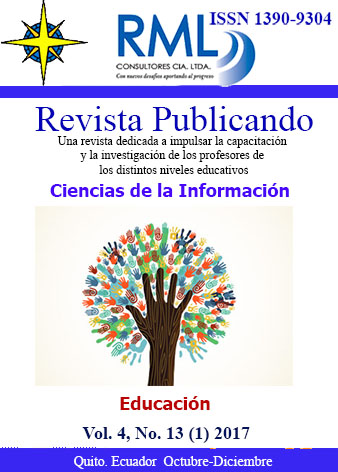Resumen
The goal of this study was to know if listening to songs in English can help people improve their performance with learning English as a second language. That is why we could hire this design to control the random form of student performance. The study sample consisted of analyzing EFL students, both men and women, to see how effective the use of the songs is in improving the performance of the language. The students were randomly assigned in groups to be studied. After implementing the path with the songs, an evaluation was used to verify if the two groups with the proposed method to help with language improvement. In what was put into practice, around of fifteen songs in English for the group at the time of its evaluation. Each session, in 30 minutes, a song was put on and practiced with the students. Meanwhile, with the other group a normal class will be maintained in which no song was heard. In the end, both groups were designed with an evaluation to be able to see what is the result with the songs or not to improve the performance with the English language. The database could be selected independent samples and in the same way paired samples. The results include an update with the proposed degree to help improve their language skills. With this we can realize that the songs not only serve as a means to entertain, which in turn we can use as a pedagogical material to improve the understanding of the English language as a second language.
Referencias
Chuang, L.-L. (2016). Accessing the Workings of the Mind: From Input to Intake. USA: Chartridge Books Oxford.
Engoo Online English. (2013). engoo. Retrieved from https://engoo.com/mtrls/materials_en/material_speaking/Assessment_SpeakingTestBasic_01_core.pdf
Engoo Online English. (2013). engoo. Retrieved from https://engoo.com/mtrls/materials_en/material_speaking/Assessment_SpeakingTestBasic_02_core.pdf
Gebhard, J. (2006). Teaching English as a Foreign Or Second Language. Michigan: The University of Michigan Press.
Grí¼nert, R. (2009). Teaching English through songs. Norderstedt: GRIN Verlag.
Krawiec, M. (2014). Cross-Curricular Dimensions of Language Learning and Teaching. Cambridge Scholar Publishing.
Ornerová, L. (2011). The Use of Pop Songs in the EFL Classroom. Hamburg: Diplomica Verlag GmbH.
Richards, J., & Burns, A. (2011). Tips for Teaching Listening: A Practical Approach. Pearson Education.
Sull, T. (2012). Seventeen Songs for Children. United States of America: Trafford Publishing.
Szpyra, J. (2014). Pronunciation in EFL Instruction. Great Britain: Multilingual Matters.
Wickham, R. (2011). Practicalities of using Music and Rhythm in the everyday teaching of English language in Malaysian schools. Malaysia: Brighton Education Learning Services.
Usted es libre de:
Compartir — copiar y redistribuir el material en cualquier medio o formato
Adaptar — remezclar, transformar y construir a partir del material
La licenciante no puede revocar estas libertades en tanto usted siga los términos de la licencia
Bajo los siguientes términos:
Atribución — Usted debe dar crédito de manera adecuada, brindar un enlace a la licencia, e indicar si se han realizado cambios. Puede hacerlo en cualquier forma razonable, pero no de forma tal que sugiera que usted o su uso tienen el apoyo de la licenciante.
NoComercial — Usted no puede hacer uso del material con propósitos comerciales.
CompartirIgual — Si remezcla, transforma o crea a partir del material, debe distribuir su contribución bajo la lamisma licencia del original.
